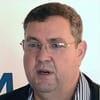Explore all the information on
Poultry welfare
Proper animal welfare involves providing the proper housing, management, nutrition, disease prevention and treatment, responsible care, humane handling and, when necessary, humane euthanasia. These factors allow for the most optimal and humane growing environment. The concept of animal welfare includes three elements: the bird’s normal biological functioning, its emotional state and its ability to express its natural behaviors. Improving animal welfare can be accomplished through offerings like poultry feed enrichment, which can reduce stress, thereby increasing performance, productivity and profitability. Animal welfare is currently a major requirement for intensive poultry production. Beak trimming, stocking density, free access to feed, heat stress, and air pollutants became important issues, which are regulated in several countries. Animal welfare is observed by watching how birds naturally behave and even by looking at mortality stemming from aggressive behaviors.
Free range hens are exposed to various potential stressors including weather conditions and risk of predation (Gilani et al., 2014). Distress can result in impaired biological functions including reduced reproduction, immunity and growth (Palme, 2012). In order to investigate the impact of early range usage, corticosterone concentrations in egg albumen were measured in response to a stressor (manual handling and relocation) in free range hens. Two groups (n = 625) of commercial free...
Comments : 0
Recommendations: 0
High ambient temperatures coupled with high humidity can be devastating to commercial broilers. Heat stress interferes with the broiler´s comfort and suppresses productive efficiency. Although increased heat is seen as a major problem in poultry production, studies show that it is not only the excessively high temperatures, but also the fluctuation of the temperature which is more detrimental for a broiler to perform. Heat stress is a significant source of economic loss...
Comments : 27
Recommendations: 6
A patented split-feeding program for broiler breeders is disrupting conventional approaches to poultry nutrition. Developed by Trouw Nutrition, a Nutreco company, the split-feeding innovation has demonstrated improved hatching rates and lower feed costs in research centre trials and commercial farm studies.
The system delivers nutrients that support the birds’ requirements for egg formation at different times of day, as research conducted with laying hens shows birds’...
Comments : 0
Recommendations: 0
The Prestage Department of Poultry Science from North Carolina State University invites you to participate in the North Carolina Broiler Supervisor's Short Course on April 21st, 2021.
We continue to work with local and state health officials, as well...
Comments : 0
Recommendations: 4
For the poultry industry, the old saying of horsemen, ”no foot, no horse”, could be re-phrased into “no foot, no bird”. The rapid growth rate and large size of meat poultry poses a challenge on their foot health. Add to...
Comments : 0
Recommendations: 0
By Leonie Jacobs/Poultry Extension Collaborative Blog
Tessa Grebey and colleagues researched dustbathing behavior in a range of commercial laying hen breeds, including Hy-Line Brown, Bovan Brown, DeKalb White, and Hy-Line birds.
They found that strains respond to social situations differently.
DeKalb White and Hy-Line W36 birds dustbathe in larger groups (10-11 birds), compared to the brown breeds (3-4 birds)
DeKalb White and...
Comments : 0
Recommendations: 0
1. Introduction In free-range and aviary housing systems, individual hen behavior can vary significantly, such that, some hens rarely access the outdoors while others utilize the range regularly [1–4]. Free-range and aviary housing systems provide hens with horizontal and vertical space, allowing for various choices, opportunities, and interactions; including dust bathing, sunbathing, perching, and exploration which are believed to improve hen welfare [5,6]. However, not...
Comments : 0
Recommendations: 0
MADISON, N.J. – Merck Animal Health, known as MSD Animal Health outside the United States and Canada, a division of Merck & Co., Inc., Kenilworth, N.J., USA (NYSE:MRK), announced the completion of its acquisition of PrognostiX Poultry Limited d/b/a Poultry Sense Ltd. from its founding shareholders. Poultry Sense Ltd. is an innovator in health and environmental monitoring solutions for the poultry industry. In March 2019, Merck Animal Health invested in Poultry Sense Ltd., to...
Comments : 0
Recommendations: 0


Sustainability as a Non-Negotiable Pillar in Modern Poultry Production
Suggested link
Precision poultry farming is the use of advanced technologies to optimize the contribution and health/welfare management of individual animals. UGA poultry science Extension team will host the 2021 Georgia Precision Poultry Farming Conference to...
Comments : 0
Recommendations: 1
By Claire Marie Coleman for CAES News
Chicken is one of the most widely eaten proteins in the world. The poultry industry contributes more than $41.8 billion to Georgia’s economy each year. The U.S. alone...
Comments : 0
Recommendations: 0
1. Introduction One of the main goals of free-range egg production is to optimise laying performance and egg quality while supporting hen health and welfare. However, opportunities provided in the free-range system allow for the expression of a variety of behaviours, interactions and physical experiences (e.g., being exposed to uncontrolled environmental conditions) which may impact hen health, welfare, and survival [1–3]. For example, free-range flocks are frequently...
Comments : 0
Recommendations: 1
I. INTRODUCTION The global supply of poultry products will need to double by 2050 if we are to meet the aspiration of all people to be food secure. We will need to produce more poultry meat in the face of changing consumer perceptions and constrained resources. Consumers expect this to be achieved in a sustainable manner. The industry has the skills to achieve this. Genotypes continue to improve; production methods and business models are evolving; and we have enhanced our...
Comments : 0
Recommendations: 1
Animal Welfare is Key to the Sustainability of the Poultry Industry Animal welfare is in the eye of the beholder. Some consumers are willing to pay more for products from companies with reputations that align with their beliefs. The concept of animal welfare is...
Comments : 0
Recommendations: 3
Early feeding can improve broiler performance and welfare The first experiences of a day-old chick play an important role for the development and performance of chicks later in life. Especially for broilers, one or two days make up a large portion of their relatively short...
Comments : 0
Recommendations: 3
by Sam Shafer
When humans domesticate and breed an animal, they tend to select for a very specific trait. In laying hens, artificial selection for high egg production has led to hens that can produce 320 eggs a year. But could artificial selection have unintentionally altered hen brain morphology?
In a new study, published in the July issue of Poultry...
Comments : 0
Recommendations: 0
INTRODUCTION Despite superior color vision, hue discrimination, and motion detection, broiler chickens are typically kept in lighting conditions deemed suitable for humans. Environments tailored to poultry vision could lead to improvements in bird health, welfare, and performance by supporting the development of normal vision and in male broilers (Edwards, 2003). UVB exposure also improved bone mineral density, egg production, and levels of vitamin...
Comments : 0
Recommendations: 0
Gangrenous dermatitis (GD) is a serious bacterial disease affecting poultry. It generally is fatal, often within 24 hours. It sometimes seems to appear almost out of nowhere because suddenly you will have healthy birds and dead birds, but not many birds in between. While GD has been reported in commercial layers, turkeys, and broiler breeders, it usually occurs in fast-growing broilers between 4 and 8 weeks of age .
In recent years, there has been an increase of...
Comments : 3
Recommendations: 0
The occurrence of pasty vent is usually observed after 3 days of age when chicks are mainly depending on their feed rather than their yolk sac. Some chicken flocks present pasty vent more often than others, being their frequency variable and hard to track. How can it be prevented or treated? Could this characteristic damage the growth or feed conversion ratio at the market age? The pasty vents are produced because the cecal dropping has a sticky consistence and thereby not be released out...
Comments : 12
Recommendations: 12
It is fairly common practice to operate evaporative cooling pads off both house temperature and an interval timer. For instance, the evaporative cooling pad pump would be set to turn on once house temperature reaches 82°F, at which time an interval...
Comments : 5
Recommendations: 6
Maintaining bird comfort during the hot, humid summer is critical for optimum weight gain, feed conversion, and livability. In most situations, modern-day poultry houses are equipped with tunnel ventilation systems with large exhaust fans at one end and evaporative cooling pads at the opposite end. Evaporative pads are chosen mainly for their high efficiency, while foggers (low-pressure misting systems) may be installed as a supplement to cool cell systems. Unfortunately, however,...
Comments : 3
Recommendations: 2



.jpg&w=3840&q=75)














.mp4&w=3840&q=75)



.mp4&w=3840&q=75)






